Juggling multiple clients, especially when they’re all vying for your attention, is a recipe for a big headache if you don’t know how to manage your time well. Time management is a phrase so overused that we can sometimes forget to take it seriously. But, for freelancers or agencies spinning lots of plates at the same time, improving your time management skills is essential. This article will provide you with time management tips and strategies you can use to ensure time is spent in the right places.
1. Try time tracking software
Time tracking apps are used widely across agencies to get a clear understanding of how much you should be charging your clients. If you’re looking for ways to improve time management and you don’t currently use a time tracker, then it might be time to consider trialling one. With a time tracker, such as Hubstaff, you can set up individual clients and track the time you spend on each one, with the click of a button. It’s a super simple way to keep track of where you spend your time. You can analyse this data to look for areas of improvement. If you’re spending too much time completing certain tasks, and too little on others, then this is a problem area you need to look at.
2. Set a time limit
To help with efficient time management, spend time right at the start of the day planning how you’ll allocate your time. If you know you need to do X for Client A and Y for Client B, set a time limit for how long these tasks will take and stick to it. If you’re not used to doing this, you might find it tricky to stick to time limits at first. But perseverance will pay off. Soon, you’ll find you can work within the constraints you set yourself more easily, making your days feel more manageable and less chaotic.
3. Shorter meeting times
Have you ever noticed that nine out of ten meetings run all the way up to the set end time, rather than finishing early? For example, when we set a meeting for an hour, even if an hour is unnecessary, we find ourselves slowing down to fill that time. Trial setting shorter meetings, especially when there is less to cover. Don’t be afraid of allocating 30-minute slots or even setting 45-minute meetings. You can always be upfront with your clients that you’re trialling these shorter meetings and if it doesn’t work, you can always revert to the original meeting time.
4. Spend time evaluating your processes
It can be easy to keep doing the same thing over and over because you’ve always done it that way. Yet, this mentality can be one of the biggest drains of time. Make a point of questioning the way you do things or the way you’ve always done things, to see if there’s a quicker way of completing a task. Is there something you’re doing manually that could be automated? Do you spend time checking grammar when you could rely on an app like Grammarly to do that job for you? If evaluating your processes doesn’t come naturally to you, put an afternoon aside every few months to really drill down into the way you’re working, and look for where efficiencies could be made.
5. Outsource when you’re stacked
One of the best time management tips for freelancers is to delegate when your workload is running off the Richter scale. This doesn’t have to mean outsourcing the work you do for clients, as this might be against your contractual agreement. But you can outsource administrative tasks, such as invoicing, digital filing, research or even your own business marketing, such as social media management. It’s quite common now for freelancers to hire a virtual assistant online, from platforms such as Upwork, when they need additional support in getting through their to-do list. This could be a one-off hire or a more regular arrangement, depending on your needs.
6. Ask yourself ‘is this the best use of my time?’
Many time-poor business people constantly ask themselves and their colleagues this question. Do you need to do something right now? Or is there something else you’d be better to spend your time doing? Two of the key traits you need to develop when working with many clients are flexibility and adaptability. Things can change so much through the course of the day, particularly on hectic days. So, rather than stick rigidly to the plan you set yourself at the start of your day, take a moment to evaluate if that is still the best use of your time, given the information you now have. You’ll be surprised at how often the answer is, ‘No.’
7. Designate contact hours
Client relationships can go sour when they deem you to be unresponsive. Equally, the relationship can also sour when you feel forced to respond constantly to their every whim. Managing contact time with your clients can be difficult. One way to ensure you can focus on doing your job whilst also responding to client queries is to designate contact hours when you’re able to respond to their queries. Even better, set up regular contact calls with your clients where you can go through any project updates with them succinctly. This can often be a better way of communicating than long-winded email chains. Set your contact hours at the start and end of the day so you can spend the bulk of your time focusing on getting work complete, without distractions.
8. Organise your systems
One way to improve your time management at work is to construct organised systems. From creating a logical digital filing system so you can quickly and easily find documents, to colour-coding your calendar so you can see at a glance which client you should be working on, organising helps avoid time wasted hunting for the information you need. Think about it this way. With disorganised systems, you may spend several minutes hunting for documents or log in details. 2 minutes a day hunting for information adds up to 12 hours of time wasted over the course of a year. You could literally claw back a whole day and a half by organising your systems. A no-brainer, really.
9. Hard stop when you need to
One of the hardest lessons to learn for people managing multiple clients is that stopping is sometimes the best thing to do. While it might be tempting to work until 11 pm to finish a task when you’re super busy. Consider if you are really working productively. Could you spend 1 hour in the morning completing something that would take you 3 hours when you’re really tired? Think about it like this, would you continue to drive a car that was almost out of petrol? No. So, why do you continue to work when you’re too tired to function properly? When your tank is empty and you need to refuel, be strict with yourself about doing so. Just because you can continue, doesn’t mean you should.
10. Learn to say ‘no, but’
If you know you tend to people-please, you may find it hard to say ‘no’ when someone asks for your help. While it is always good to show you’re willing to help and be flexible to accommodate your clients, saying ‘yes’ all the time can have dire consequences if you’re not able to realistically achieve what you’ve taken on. Learning how to say ‘no, but I can do X’ is powerful and will help you make sure you don’t take on more than you can feasibly do. For example, if a client asks you to help with work when you’re swamped and you can’t feasibly take on the project for the deadline they’re asking for. Instead of blindly saying ‘yes,’ and risking souring the relationship when you fail to meet expectations, try saying ‘no, but I could help you if the deadline was extended,’ or ‘no, but I know somebody that could help you with that’. That way you’re saving yourself from a sticky situation but also offering alternative solutions.
11. Use productivity tools to save valuable time
One of our favourite time management tips is to look for productivity tools that can assist you in staying on track, saving you time in the long run. Switch is a Chrome extension that sits within your browser. It’s really handy for people who juggle many different projects at once, as it allows you to log in to multiple accounts of the same application, so you can switch between them seamlessly, without having to switch browsers or log in and out. It also gives you a better handle on tab management. So, you can see all of your tabs in a more user-friendly way, rather than having masses of tiny grey boxes at the top of your browser and not knowing where anything is. The precious time saved by installing and utilising Switch adds up over the long run, as you’re able to work more efficiently and your flow is not interrupted by chopping and changing as much.
12. Do not multitask
A few people will likely see this subheading and say, ‘but that’s impossible.’ And, while it might not be possible to stop multitasking entirely, there is certainly more we could and should do to move away from multitasking and move towards focusing on one thing at a time. It can be a point of pride to tell people how much we juggle or how good we are at multitasking. But the fact is, multitasking – the process of trying to do more than one thing at one time – means nothing gets done well, as we’re not giving tasks the full attention they require. To give you an example we can all relate to, we can see how obviously multitasking doesn’t work when we try to talk while we’re eating. Aside from it being gross to share the contents of your mouth with whoever you’re talking to, you cannot be understood very well, you might spray bits of food everywhere and you could even choke if you’re not careful. Plus, nobody likes it when people talk while they’re eating. So, think of ways you can try and focus your attention on one thing at a time. Even if it’s only in short sprints.
Try Switch Today To Stay Ultra-Productive
Switch helps busy digital workers stay on-task throughout their working day. It’s specially designed to assist the modern workday, creating a seamless way to work between multiple applications and accounts at once. Install Switch today and watch your productivity levels soar.
Switch
Switch is a productivity tool for busy digital workers. It helps you work quicker than ever before by streamlining your workstation and cutting down time wastage in your browser. Learn more here.

